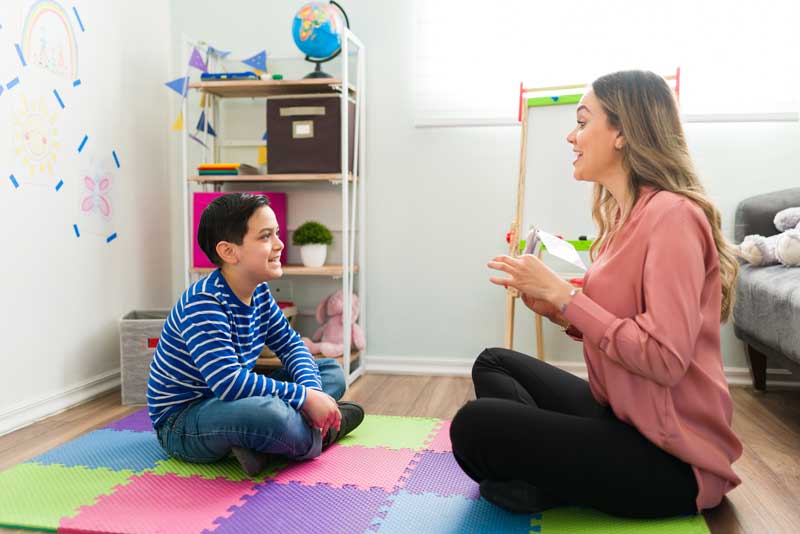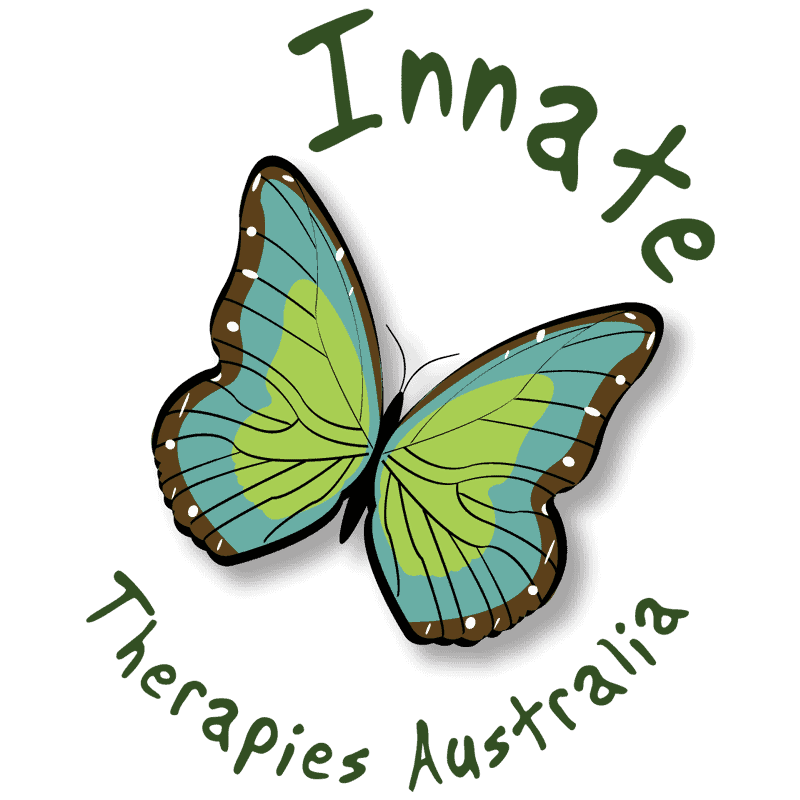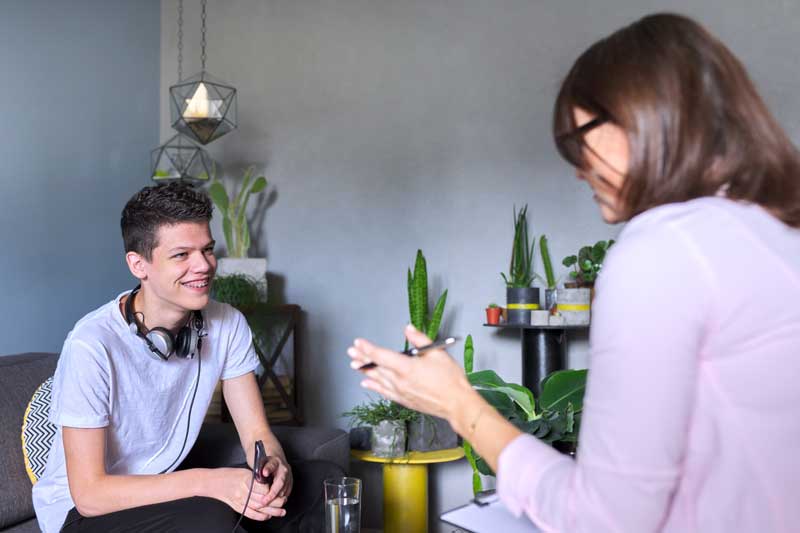A Quick Guide
Life throws us all curveballs. Sometimes, navigating these challenges can feel overwhelming, impacting our mental and emotional well-being. Therapy, also called counseling or psychotherapy, can help us deal with challenges and live better lives. But with so many different types of therapy available, choosing the right one can be confusing.
This guide will explain different therapy methods, helping you understand your options and how they can help you. Whether you’re seeking help for yourself, your child, or your family, this guide will equip you with the knowledge to make an informed decision.
At Innate Therapies, we offer a variety of therapies. If you think therapy could help you, please contact us.
Understanding Your Needs
Before diving into specific therapies, it’s crucial to identify your needs and goals. Here are some questions to consider:
What specific challenges are you facing?
(e.g., anxiety, depression, relationship issues, grief, trauma)
What are you hoping to achieve through therapy?
(e.g., manage stress, improve communication skills, strengthen relationships)
What kind of environment feels comfortable for you?
(e.g., traditional talk therapy, creative expression)
Once you have a clearer picture of your needs, you can start exploring the different therapy models available.
Exploring Different Types of Therapy
Children’s Therapy
Children’s therapy helps kids with emotional, behavioral, and developmental problems using different techniques and practices. These therapies often use creative and interactive methods to engage children in ways that resonate with their developmental stage.
Play Therapy: Utilises play to help children express their feelings, develop problem-solving skills, and process traumatic experiences. Children can safely explore their thoughts and feelings through play with a therapist’s guidance in a secure environment.
Behavioural Therapy: Focuses on changing negative behaviours through reinforcement strategies. We use techniques such as positive reinforcement, token economies, and time-out to shape desired behaviors in children.
Cognitive Behavioral Therapy (CBT): Helps children identify and change negative thought patterns and behaviours. CBT for children often involves age-appropriate activities to teach coping skills and cognitive restructuring.
Benefits
– Enhances emotional regulation
– Improves social skills
– Helps in trauma recovery
– Promotes healthy development

Being that a majority of our therapies are geared towards children we also have specialised therapies listed below.
Sensorimotor Art Therapy
Sensorimotor art therapy integrates movement and artistic expression to facilitate healing and personal growth.
Sensorimotor art therapy includes art sessions indoors or outdoors, nature-inspired dance, and using natural materials for art. These elements help deepen the connection between the individual and the natural world, enhancing the therapeutic process.
Movement and Dance: Uses body movement to express and process emotions. Movement and dance therapy helps individuals connect with their bodies and release pent-up emotions.
Art Creation: Engages clients in drawing, painting, or sculpting to explore feelings and experiences. Art creation provides a non-verbal outlet for emotional expression.
Benefits
– Enhances emotional expression
– Promotes physical and mental integration
– Reduces stress and anxiety
– Facilitates trauma processing
Therapy Through Play
Therapy through play uses play activities to help individuals, particularly children, explore emotions, resolve conflicts, and develop coping mechanisms.
Techniques
Directive Play Therapy: Therapist guides the play to address specific issues. This approach has structure and goals.
Non-Directive Play Therapy: Child leads the play, allowing for natural expression and exploration. This approach is child-centred and non-intrusive.
Benefits
– Provides a safe space for expression
– Enhances problem-solving skills
– Improves emotional regulation
– Supports developmental growth
Integrating our therapies into play therapy can involve outdoor play, interaction with animals, and nature-based activities. These elements provide a rich sensory experience that supports emotional and psychological healing in children. At Innate Therapies, our main goal is to help by offering indoor activities that can help express emotions.
Interplay Therapy
Interplay therapy combines movement, storytelling, and play to promote healing and personal development.
Storytelling and Role-Play: Encourages individuals to explore different aspects of their personality and experiences. Storytelling and role-play help individuals process emotions and develop new perspectives.
Movement and Play: Uses physical activity to express and process emotions. Movement and play foster creativity and spontaneity.
Benefits
– Enhances creativity and self-expression
– Promotes emotional and physical integration
– Reduces stress and anxiety
– Facilitates trauma recovery
Incorporating interplay therapy can involve outdoor movement activities, nature-based storytelling, and role-playing in natural settings. These approaches help individuals reconnect with their creativity and spontaneity.
Symbol Work and Sand Play
Symbol work and sand play involve using symbolic objects and sand to express and explore emotions and experiences.
Sand Tray Therapy: Clients create scenes in a sand tray using miniature figures and objects. Sand tray therapy provides a safe and non-verbal medium for exploring emotions.
Symbolic Play: Uses symbolic objects to represent and work through issues. Symbolic play helps individuals externalise and process their internal experiences.
Benefits
– Provides a non-verbal outlet for expression
– Enhances self-awareness and insight
– Facilitates emotional processing
– Promotes creativity and problem-solving
Symbol work and sand play use natural objects like stones, leaves, and shells in a sand tray. These elements enrich the sensory experience and foster a deeper connection with nature.
Clay Field Therapy
Clay field therapy involves the use of clay to facilitate emotional expression and healing. This tactile therapy engages the senses and allows for creative exploration.
Clay Modeling: Clients shape and mold clay to express their feelings and experiences. The tactile nature of clay work helps individuals connect with their emotions.
Sensory Integration: The therapist guides clients in using clay to integrate sensory experiences. Sensory integration through clay work can help regulate emotions and reduce stress.
Benefits
– Enhances emotional expression
– Promotes sensory integration
– Reduces stress and anxiety
– Facilitates trauma processing
Clay field therapy can involve using natural clay and conducting sessions in outdoor settings. These elements help deepen the sensory experience and foster a stronger connection with the earth.
Safe and Sound Protocol (SSP)
Safe and Sound Protocol (SSP) is a non-invasive intervention designed to improve social engagement, emotional regulation, and auditory processing. It uses specially filtered music to stimulate the vagus nerve and enhance the nervous system’s ability to regulate itself.
Listening Sessions: Clients listen to specially filtered music through headphones. We designed these sessions to be calming and therapeutic.
Therapeutic Support: Therapists provide guidance and support during and after the listening sessions. This support helps clients integrate the benefits of SSP into their daily lives.
Benefits
– Improves social engagement and communication
– Enhances emotional regulation
– Reduces anxiety and stress
– Supports sensory processing and integration
For more information on all of these therapies please visit our therapies page.
Adult Therapy

Adult therapy aims to help individuals navigate various life challenges, mental health issues, and personal development goals. It encompasses a wide range of approaches, depending on the individual’s needs.
Cognitive Behavioral Therapy (CBT): Focuses on identifying and changing dysfunctional thought patterns and behaviours. Doctors widely use it to treat depression, anxiety, and other mental health issues.
Acceptance Commitment Therapy (ACT): Encourages individuals to accept their thoughts and feelings and commit to personal values. ACT combines acceptance and mindfulness strategies with commitment and behaviour-change techniques.
Solution Focused Therapy: Centers on finding solutions to current problems rather than focusing on past issues. This therapy is goal-oriented and focuses on the present and future.
Expressive Therapies: Use creative arts (such as music, art, and drama) to facilitate emotional expression and healing. These therapies can help individuals process complex emotions and experiences.
Benefits
– Alleviates symptoms of depression and anxiety
– Enhances coping strategies
– Promotes self-awareness and personal growth
– Supports mental and emotional well-being
Relationship & Family Therapy
Relationship and family therapy focuses on improving communication, resolving conflicts, and strengthening bonds between family members or partners.
Involves multiple family members to resolve conflicts and improve family dynamics. Therapists use approaches like Structural Family Therapy and Strategic Family Therapy to address family issues.
Integrating our techniques into relationship and family therapy can involve activities such as family nature walks, outdoor team-building exercises, and mindfulness practices. These activities foster a sense of togetherness and help family members or partners reconnect in a natural, stress-free environment.
Benefits
– Improves communication and understanding
– Resolves conflicts and reduces stress
– Strengthens family bonds
– Promotes healthier relationship patterns
Attachment and Trauma Therapy
Attachment and trauma therapy addresses the impact of early attachment issues and traumatic experiences on mental health and relationships.
Types of Attachment and Trauma Therapy
Trauma-Focused CBT: Combines trauma-sensitive interventions with cognitive-behavioural techniques. It is effective in reducing symptoms of PTSD and other trauma-related disorders.
Eye Movement Desensitization and Reprocessing (EMDR): Uses guided eye movements to process and reduce the impact of traumatic memories. EMDR helps individuals reprocess traumatic experiences in a safe and controlled environment.
Attachment-Based Therapy: Focuses on improving the emotional bond between individuals and their caregivers or significant others. This therapy helps individuals develop secure attachment patterns.
Benefits
– Reduces symptoms of PTSD and anxiety
– Improves emotional regulation
– Enhances relationships and attachment security
– Facilitates trauma recovery
Critical Incident Therapy
Critical incident therapy is designed to provide immediate support and intervention following traumatic events or crises.
Critical Incident Stress Debriefing (CISD): A structured group discussion designed to process the traumatic event and its impact. CISD helps individuals share their experiences and receive emotional support.
Individual Crisis Counseling: One-on-one sessions to help individuals cope with the immediate aftermath of a crisis. This type of counselling provides personalised support and coping strategies.
Benefits
– Provides immediate emotional support
– Reduces the risk of long-term psychological impact
– Helps individuals process and understand the event
– Promotes recovery and resilience
The diversity of therapeutic approaches reflects the varied needs of individuals seeking mental health support. Whether addressing childhood developmental issues, adult mental health challenges, relationship dynamics, or trauma recovery, there is a therapeutic approach tailored to each unique situation.
Understanding the different types of therapy, along with the benefits of our services at Innate Therapies, can help individuals make informed decisions about their mental health care, leading to more effective and personalised treatment outcomes.

